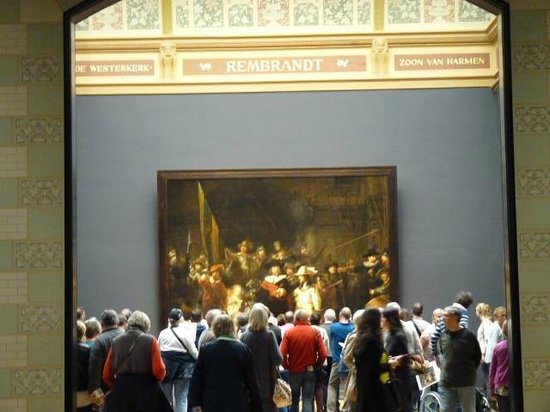 |
| Picture: BBC |
The National Gallery's guards are striking against plans to outsource their jobs. People are understandably annoyed at disrupted visits, and my first instinct is to back the NG on this one. The guards' case has not been well made. The boorish fool trolling Bendor Grosvenor's blog does their side no favours, and Polly Toynbee's support almost guarantees that I'll take the other side (an unworthy prejudice, but I find it an effective heuristic). Hackneyed arguments against evil outsourcing are often a plea for special treatment rather than a principled case for a public service ethos. Sometimes outsourcing is just a cheaper and more efficient way of delivering a service, and I'm all for that.
But this time I'm with the union. Their fight for the best terms for their members coincides with the public interest, and they're doing a better job of safeguarding the gallery than the trustees and managers. The NG is pursuing outsourcing for the wrong reasons and it won't work.
First some background. Outsourcing requires an explicit contract defining the services to be delivered and how delivery will be monitored and assessed. Contractors need to bid on a level playing field, so they need precise definition. Contracts are then won primarily on price - the cheapest tender generally wins. So the contractors are acting predictably and rationally when they seek to provide the barest minimum service consistent with the service level agreement. That's not a problem when services can be defined precisely. If the job is patrolling a goods yard, outsourcing might make sense. You want people on the ground as a deterrent, with an easily defined and easily assessed role. The contractor needs to hire a rota of staff, give them a defined patrol route, then monitor with GPS and CCTV. Contractors' cost cutting benefits consumers and taxpayers, but only if they continue to provide an appropriate level of service - which has to be definable in a service level agreement.
The National Gallery's guards don't just patrol the galleries. Theirs is a more complex and more important job, which in my experience they do very well. They have to balance an enforcement function with a public service function. They must be courteous, professional and helpful, and also sometimes assertive in protecting pictures from visitors who may be quite inadvertently putting them at risk. How do you write that down in a contract? Guards are always in the public eye, and I've seen laziness and incompetence from time to time. But I'm mostly struck by their professionalism and efficiency and helpfulness, enlivened by occasional quirkiness, humour and passion. Assessing guards' performance involves a degree of subjective judgment, as does hiring the right people in the first place. That kind of assessment can't be contracted out.
I suspect outsourced guards will be less knowledgeable, less helpful and more boring, which is a great shame. But the thing that worries me most is that they will resolve the balancing act between protecting pictures and keeping visitors happy by ignoring protection entirely and ducking any potential conflict. They will have no incentive to intervene if people poke at the pictures (happens more often than you'd think), because there's unlikely to be immediately visible damage, and if there is it's unlikely to be traced back to a guard failing in their duty. But every time somebody complains that a guard has told them to step back, it will reflect badly on the contractor. The guards' incentive will be to sit back and smile and the visitors.
As former trustee Jon Snow tweeted, protecting the art is the gallery's key duty. It's not a cost-effective way of securing a service. It's a devious way of evading responsibility. If something goes wrong, they can blame the contractor. The NG's own story is that they need a more flexible workforce to cope with private evening events. I wonder if part of the issue is that they need more supine guards for private hire. The great irony is that they're criticising the union for causing closures, but museums that host private evening events are notorious for closing early and arbitrarily to set up for paid functions; it happens all the time at the V&A, especially. Paying guests take priority. And for all the pious criticism of the effect of strikes on visitors, I've more often been inconvenienced by rooms that are closed because they haven't had enough staff - which is a management and budget problem. The Poussin and Claude rooms seem to be closed half the times I go, and sometimes entire enfilades of the Sainsbury Wing are out of bounds.
It's all a sad reflection on the new corporate National Gallery. Once the contract is signed they will lose control of the must fundamental function of any gallery. They're putting the collection at risk and harming the visitor experience. And they are evading their own direct and primary responsibility to protect their pictures. Good luck the strikers, I say.

